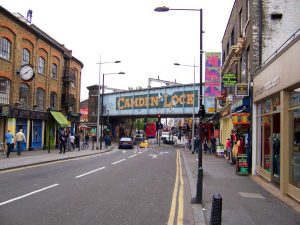
Phage: The antibacterial arms race
by Gil Reich | March 5, 2015
In 1896, Cambridge graduate Ernest Hankin could be seen furiously paddling a small canoe through the Ganges of India. Under a glaring sun, he measured decay in corpses recently consigned to the holy waters. Hankin describes collecting samples from these bodies: fighting off snapping turtles, plunging needles into cold muscles and taking readings, “before even the relatives of the dead had the time to recover from their astonishment”. These semi-cremated corpses in the river suggested to most world scientists that the water was unfit for drinking. Despite this, Hankin found fewer bacteria than expected and subsequently reported that there was some substance in the river which had significant antibacterial properties. He even recommended that the river be used for drinking water to a greater extent. A travelling writer, Mark Twain, observes Hankin’s experiments: “We happened there just in time to be at the birth of a marvel – a memorable scientific discovery… [Hankin] added swarm after swarm of cholera germs to this [river] water; within six hours they always died.”
What was curing the cholera remained unknown until 20 years later when a French microbiologist named d’Herrelle revealed the existence of a special kind of virus. Though they look like any other virus under a microscope, similar to a cut gem with spider legs, these viruses exclusively infect and kill bacteria, steering clear of animal cells. They hijack the bacterium’s inner machinery and inflate it with newly synthesised viruses. The cell is filled with a huge number of new viruses – imagine 5,000 tennis balls growing inside of a person. The intruders ultimately erupt from the bacterial host, killing it in the process. Unaware of the precise mechanism as we are today, D’Herrele named the viruses “bacteriophage” – bacteria eaters. Bacteriophage, often simply referred to as ‘phage’, have a large potential for medicinal application. The range of bacteria they target is wide, from those that cause food poisoning to cholera, and yet individual strains are very specific to certain bacteria. As a result, they do not kill the useful bacteria in the body in the way antibiotics do.
“It is becoming more and more clear that antibiotics aren’t really good for you,” says Dr Sorek, researcher of Microbial Genomics at the Weizman Institute in Israel. “When you take antibiotics you change the gut microbiota (bacterial flora). Over a long period of time some adverse effects can occur from this. Phage hold the promise of antibacterial treatment that is much more targeted. Seldom do they infect two species. That is why they are promising in terms of therapy.”
And yet, phage has never entered the medicinal mainstream. A committed communist, d’Herrelle relocated to the USSR after his initial findings. There, he continued his research into phage therapy, dedicating one of his books to Stalin. However, his research was disrupted when his student and friend, George Eliava, was executed after romantically pursuing the same woman as the chief of the secret police. Because of his association with Eliava, d’Herrelle’s book was banned, and he fled to France, where he died unknown and unacclaimed for his work.
In 1928, antibiotics were famously discovered by Alexander Fleming due to a lucky accident. D’Herrelle’s phage were all but forgotten by most of the world. However, isolated from western medical advances due to Stalin’s iron curtain, phage therapy continued to be used in the USSR. Russian soldiers were issued with ampoules of phage to put on burn wounds. To this day, phage can still be bought over the counter in the former soviet state of Georgia and are used like we might use antiseptics.
Christopher Smith, CEO of Phage International Inc., runs a clinic in Georgia despite being based in San Francisco. When asked how he got involved, he explains how he and his wife were in Georgia in 2003, adopting a baby girl. “Our daughter got sick with a strep infection and the doctor treated it with phage. That doctor is now our clinic’s doctor.”
So why hasn’t phage therapy made it to the US? “When I spoke with venture capital firms, no one knew what it was and you couldn’t convince anyone to invest.”
This reluctance to invest reflects a larger worry for pharmaceutical companies: phage are difficult to patent and therefore unlikely to return a profit. Furthermore, while antibiotics are still viable, there’s no need for phage. But there’s no guarantee they will be viable for much longer.
Antibiotic-resistant bacteria infected 2 million people in the USA last year, and one in every 100 of these people died due to the infection. Many scientists predict a nearby future resembling a pre-antibiotic era, making every routine surgery life-threatening.
Of course, nothing prevents bacteria evolving resistance to a certain phage like it does to a certain chemical. “This happens constantly” Chris says, “Someone comes to us and they have a drug resistant infection and it’ll be resistant to [the phage] commercially produced.” However, unlike an antibiotic, phage can evolve too. They are dynamic biological elements, finding a new attack path every time a bacteria puts up a wall of defence. A superbug could create a superphage. The prey and predator are caught in an evolutionary arms race, much like the international one that prevented phage from being in use today.
But if phage loses the upper hand in this arms race as it did in the last, researchers can always follow the Hankin experiments of 1896: simply go down to the river and scoop up some new phage.
Image by Amy Thellusson at The Ruskin




